You’re pondering, “Can I turn the heater off on my hot tub?” It’s not as simple as you’d think. Various factors come into play, including energy consumption, potential damage, and overall functionality.
But generally, yes, you can turn the heater off on your hot tub. Doing so will stop the water from heating up but it will continue to circulate. This is often done to save energy when the hot tub is not in use. However, during cold weather, it’s recommended to keep it on to prevent water from freezing inside the pipes.
This article will guide you through the pros and cons, giving you a clear understanding of your hot tub’s heater. So, before you hit that off switch, let’s dive into the technicalities of managing your hot tub heater efficiently.

Quick Navigation
Understanding the Function of Your Hot Tub Heater
To fully grasp whether you can turn your hot tub heater off, it’s crucial that you understand what’s happening under the hood.
Your hot tub heater, as the name suggests, is primarily responsible for warming the water to your preferred temperature. It’s an essential component that directly impacts your hot tub’s functionality and your overall experience.
At its core, the heater operates through a simple yet effective mechanism. When you switch it on, an element inside the heater starts to warm up. This element, often made of a resistant material like stainless steel, then transfers its heat to the water circulating around it.
Turning the heater off means this process of heat generation ceases, and as a consequence, the water temperature will start to drop. If you’re not planning to use the tub for an extended period, turning the heater off could save energy.
Related Read: Can You Make a Hot Tub Cool in the Summer?
Evaluating the Pros and Cons of Turning off the Heater
Before making a decision, you’ll need to weigh up the three main pros and cons of turning off your hot tub heater.
1. Pros
- The first pro is energy savings. When you’re not using the tub, turning off the heater can significantly decrease your energy consumption, thereby reducing your utility bills.
- The second advantage is increased lifespan. The heater won’t be running continuously, which can extend its operational life.
- Lastly, it reduces the potential for overheating, which can cause significant damage to your hot tub components.
2. Cons
On the flip side, there are cons to consider.
- The main downside is the time it takes for the tub to heat up again. This can be inconvenient, especially if you have spontaneous plans to use it.
- Secondly, frequent temperature fluctuations can strain the tub’s components, potentially leading to more maintenance or repairs.
- Lastly, in colder climates, leaving the heater off may cause the water to freeze, leading to severe damage.
Impact of Turning off the Heater on Energy Consumption
You’ll find that your energy consumption drops significantly when you turn off the hot tub heater, impacting both your power usage and your monthly utility bills.
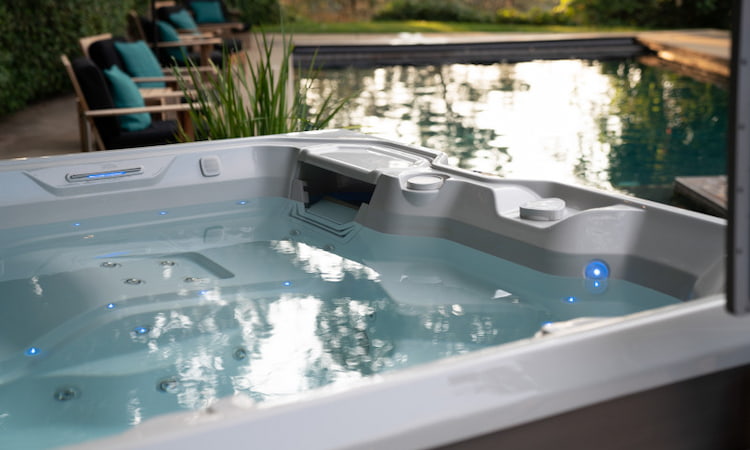
This reduction is primarily due to the energy-intensive nature of maintaining high water temperatures. When you disable your heater, the energy that was previously used to heat the water is saved, reducing your overall consumption.
However, it’s important to understand the concept of energy efficiency in this context. A high-efficiency hot tub heater, even when running, uses less energy compared to older or lower-efficiency models.
So, the energy savings realized by turning off your heater may be offset if you frequently reheat your tub from a cold state, as this requires a high energy input.
Additionally, remember that your hot tub’s insulation plays a crucial role in energy conservation. The better the insulation, the slower your water cools down, reducing the need for constant heating.
Possible Risks and Damages From Turning off the Heater
Switching off your hot tub’s heater might seem like a smart move, but it’s not without potential risks and damages, including the dreaded pipe freeze.
You might think you’re saving energy, but the resulting damage could be costly and time-consuming. Let’s dive deeper into the possible risks:
- Pipe freeze: With the heater off, water in the pipes can freeze. This can cause the pipes to burst, leading to significant water damage.
- Damage to the pump: The pump relies on warm water to function correctly. If the water gets too cold, the pump can malfunction or even break entirely.
- Unbalanced water chemistry: The heater helps maintain balanced water chemistry. Turning it off can cause rapid changes, making the water unsafe and potentially damaging the tub’s interior.
- Potential health risks: Cold water can promote bacterial growth, putting you at risk for infections.
Best Practices for Managing Your Hot Tub Heater
Even though it might be tempting to turn off your hot tub heater, it’s crucial that you manage it effectively to prevent potential damage and ensure your hot tub’s longevity. Keep the heater at a consistent temperature.
Extreme fluctuations can cause wear and tear on the heater’s internal components. A stable temperature also ensures the water chemistry remains balanced, which is essential to prevent bacterial growth.
Drain and refill your hot tub regularly. This prevents mineral build-up, which can damage the heater. Most manufacturers recommend doing this every three to four months but check your owner’s manual for specifics.
Remember to keep the hot tub covered when not in use. This keeps the heat in, reducing the stress on the heater and saving energy. Use a good quality, insulated cover and check it for damage regularly.
It’s also recommended to service your hot tub annually. A professional service will check the heater and other components for any signs of damage or wear.
Frequently Asked Questions
Yes, you’ve several efficient alternatives to hot tub heaters. Solar heating panels, gas heaters, and heat pumps are great options. They’re energy-efficient, reducing costs while maintaining your tub’s temperature effectively.
Yes, you can maintain your hot tub’s temperature without using a heater. Insulating it properly, covering it when not in use, and using solar blankets or thermal floats can effectively retain heat.
Absolutely, you can use solar power to heat your hot tub. Solar thermal collectors absorb sunlight and convert it into heat, which can then be transferred to your tub’s water. It’s eco-friendly and efficient.
Sure, you’ll notice your hot tub heater may be malfunctioning if the water doesn’t reach or maintain the set temperature. Also, if it constantly trips the breaker or makes strange noises, that’s a bad sign.
Sure, there are different types of hot tub heaters available. These include electric, gas, and solar heaters. Each has its own pros and cons, so you’ll need to choose based on your specific needs.
Conclusion
In conclusion, you can turn off your hot tub heater, but it’s not always the best choice. It may save energy but could cause damage in colder climates. Understanding your heater’s function and the potential risks is essential.
For optimal efficiency and longevity, regular maintenance and monitoring of your hot tub heater is recommended. Always consider the pros and cons, and when in doubt, consult with a professional.

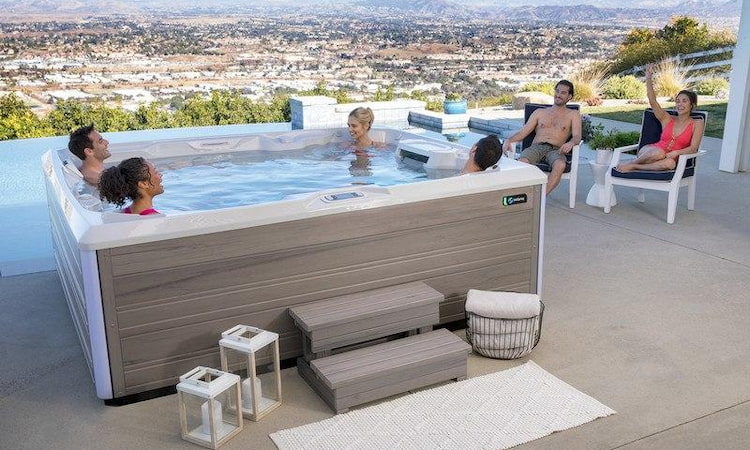
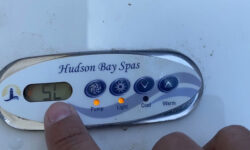
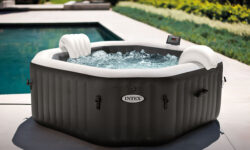
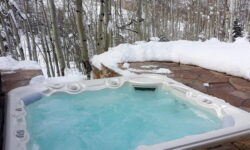
![How Much Electricity Does a Hot Tub Use? [Per Day, Week, Month] how much electricity does hot tub use](https://hottubtales.com/wp-content/uploads/2023/03/how-much-electricity-does-hot-tub-use.jpg)
